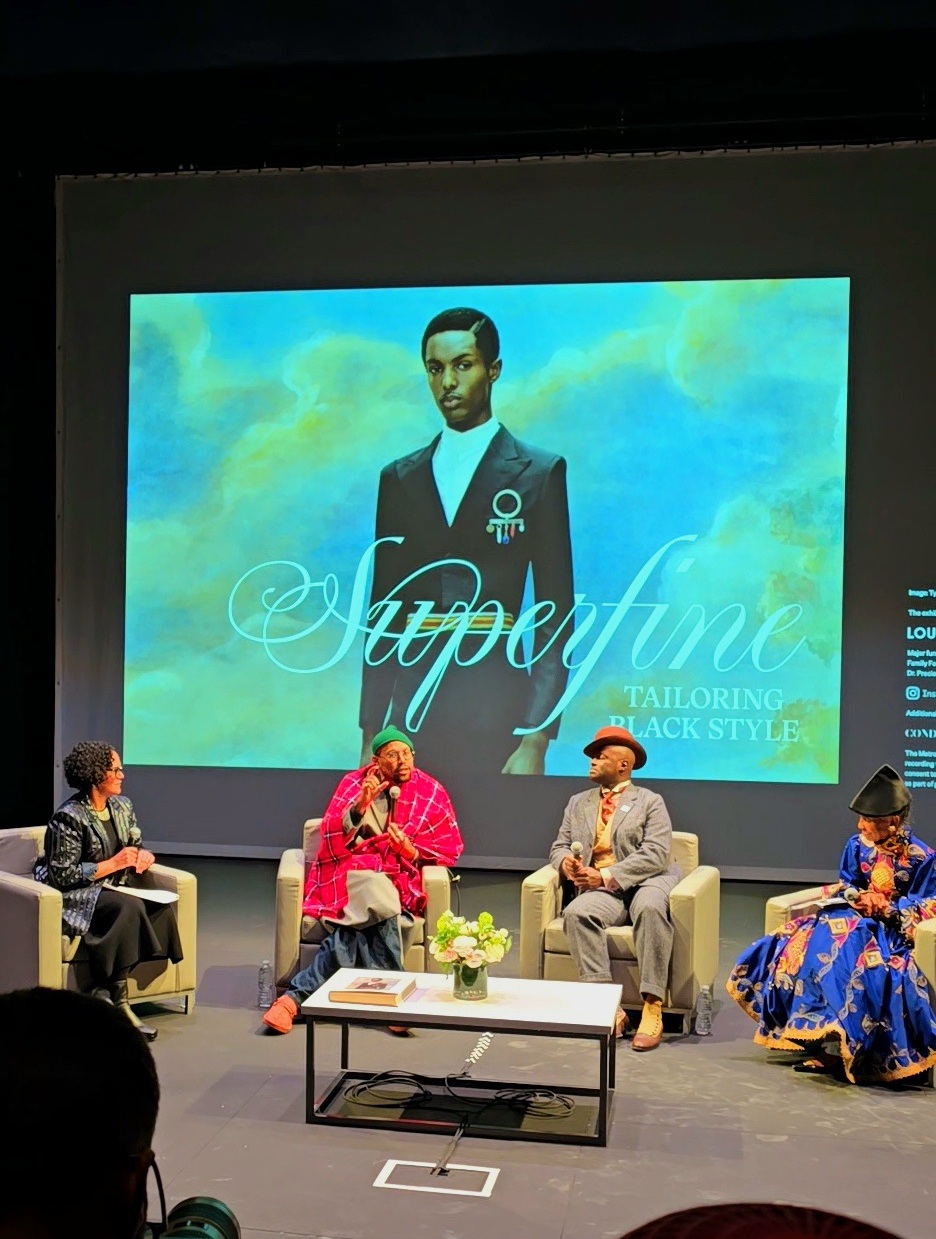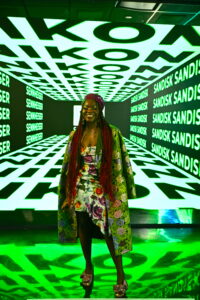I had the pleasure of attending the Met Gala exhibition preview where the conversation about the root of dandyism which expanded on this year’s theme, “Superfine: Tailoring Black Style” was led by Professor and Chair of Africana Studies at Barnard College of Colombia University, Monica L. Miller in discussion with Executive Artistic Director of the National Black Theatre, Jonathan McCrory, Historian and Fashion Icon, Lana Turner, and the very dandy Style Activist, Dandy Wellington. As I sat in Apollo’s Victoria Theatre dressed in a monochrome pink look, I learned that the theme is based on Miller’s 2009 book, Slaves to Fashion: Black Dandyism and the Styling of Black Diasporic Identity. The conversation included the history of dandyism, harlem style, and fast fashion.
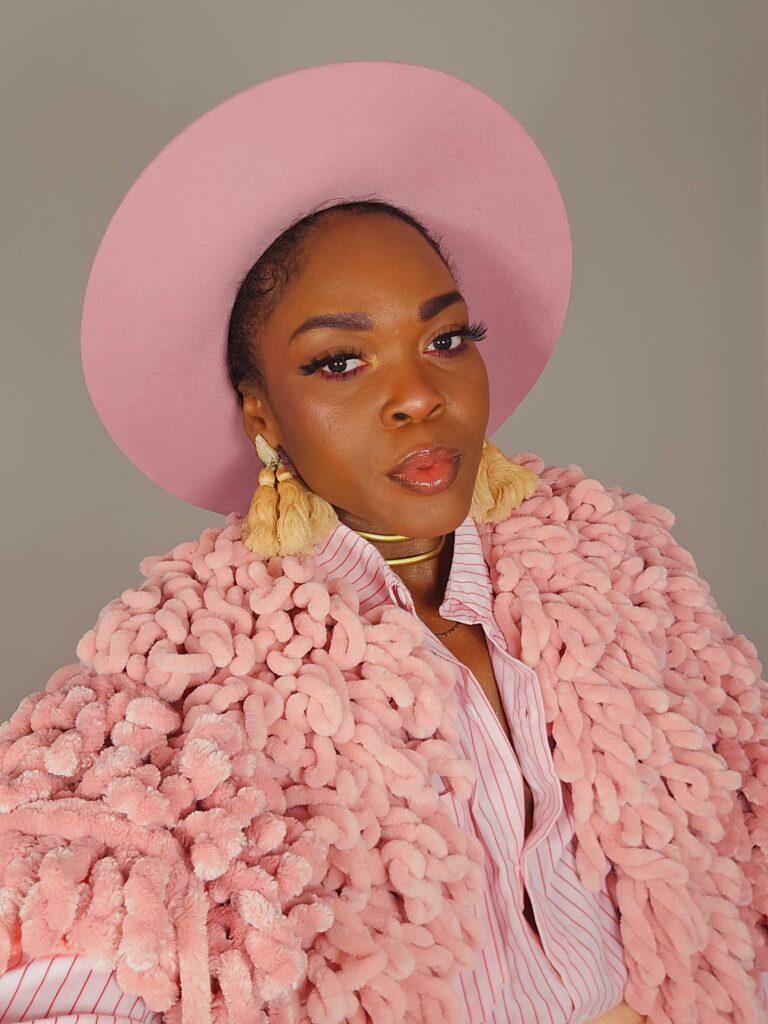
What is dandyism?
With great heritage, according to Monica L. Miller, dandyism is rooted in respectability, jook; fashion associated with music and lifestyle, and feeling cool. While it’s typically associated with wearing wide-brim hats and clothing with lapels, dandyism has evolved overtime to include much more with great effort into appearance being the recent definition of dandyism. The dictionary defines dandy as, “a man who is excessively concerned about his clothes and appearance” and “someone of exceptional or first-rate quality.” As Miller spoke of W.E.B. Dubois, who wanted to be treated as he was dressed, making an effort in style was necessary. Turner’s style was inspired by her dad, who was a chauffeur, and Lenox Avenue’s Savoir Ballroom so she enjoys opting for well tailored dresses. McCrory utilizes style as a form of protection.
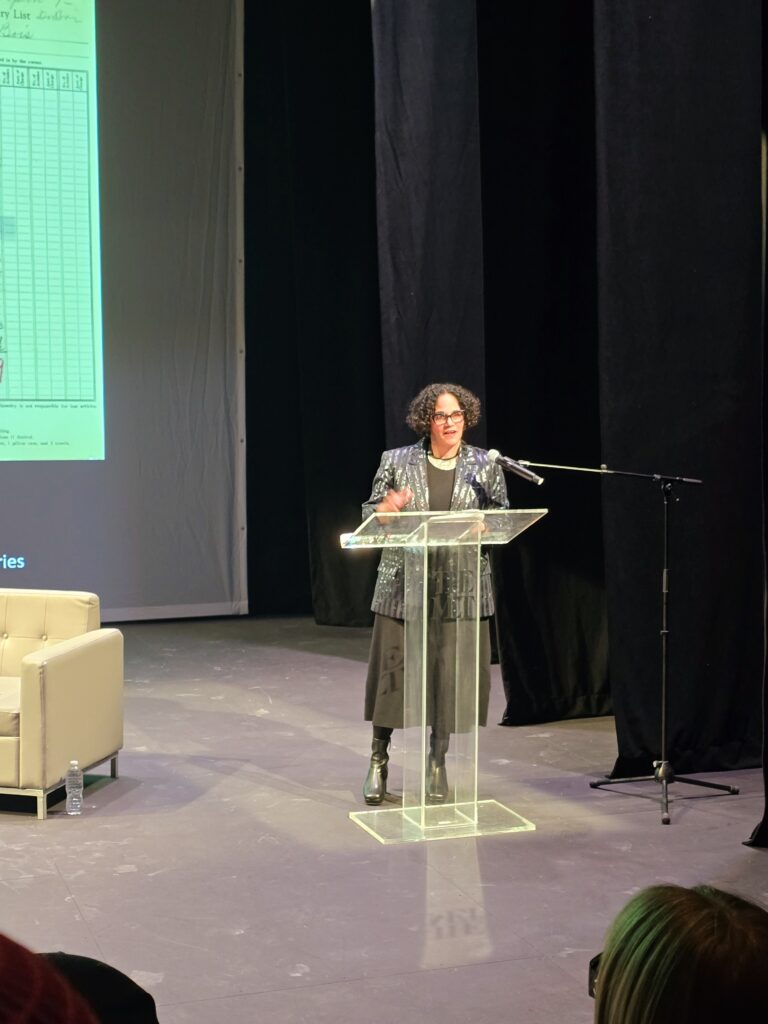
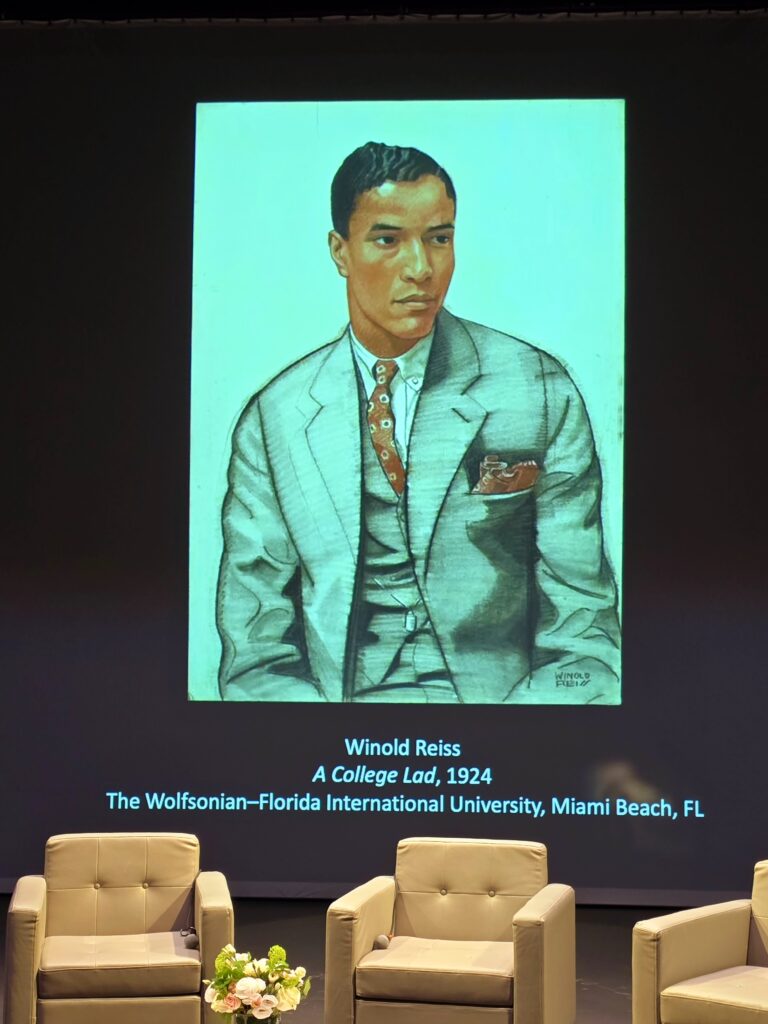
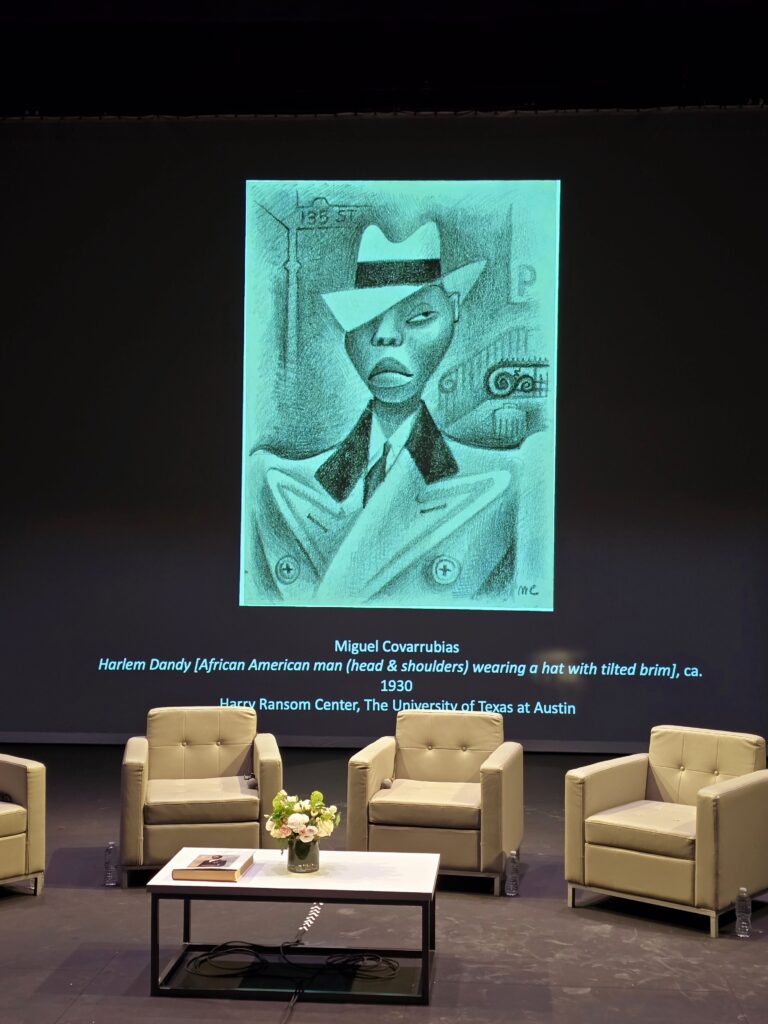
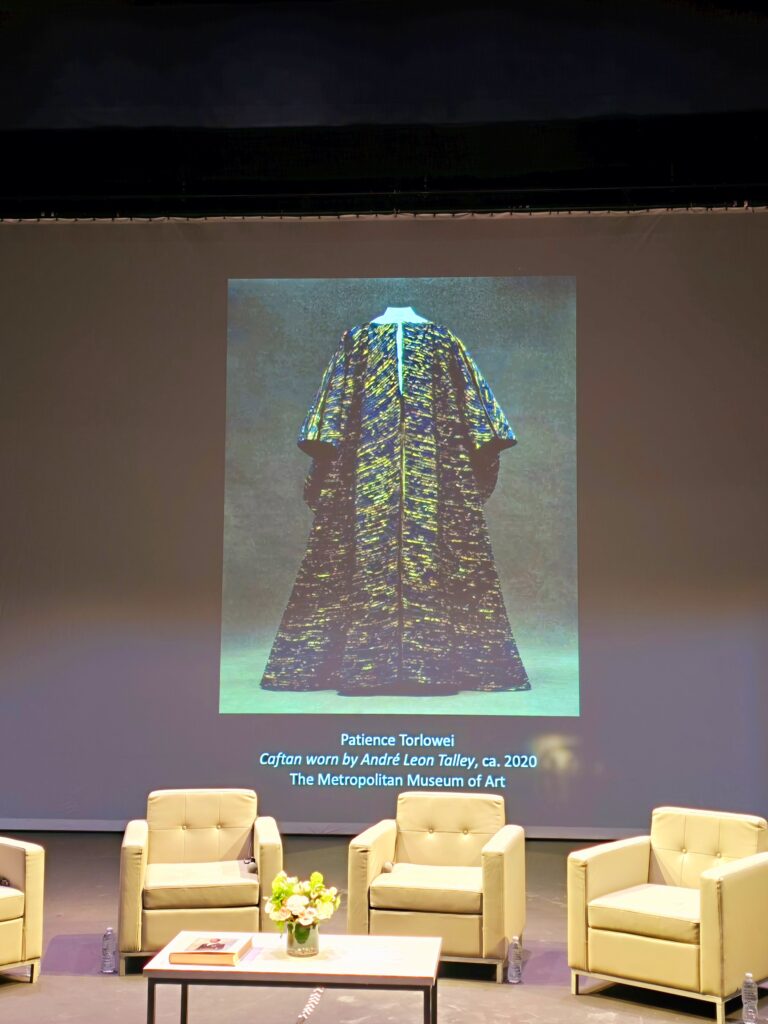
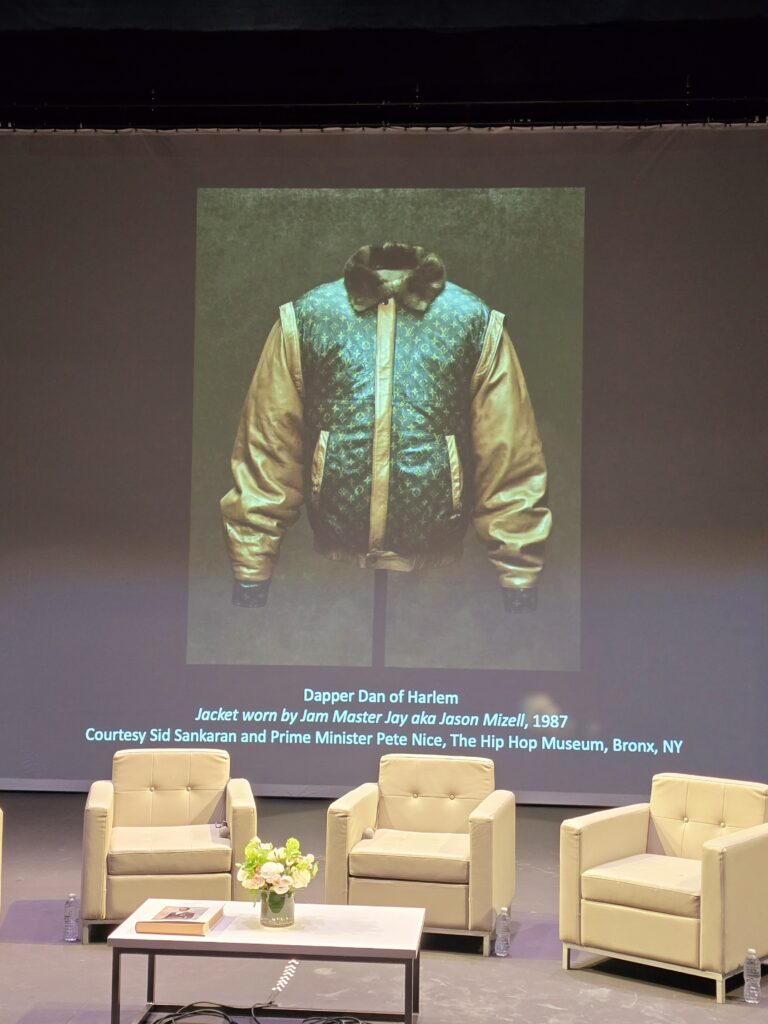
Building community through parading and style
From Adam Clayton Powell Jr.’s influence to the African American parade that fills the streets of Harlem annually in September, connection and community is felt through style. “If Adam wore a white linen suit to church, the other men would wear the same style the following Sunday,” Turner explained.
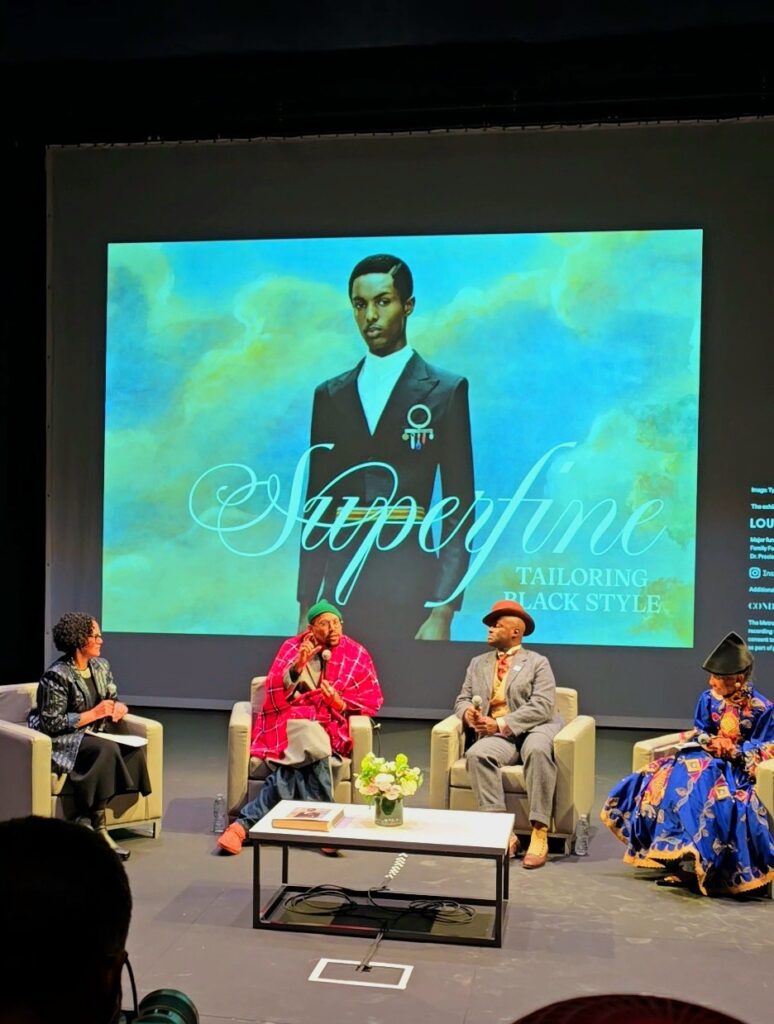
Wellington describes Harlem as “black culture” as “125 street is almost like the promenade and how black people show up to the promenade, which is the act of gathering.” McCrory names Harlem the “culture capital. Harlem has more churches than anywhere else in Manhattan. Sundays are filled with a parade of elegance of those heading to church.”
What to expect at the Met Gala exhibition
The exhibition tells the story of the black dandy over time through various forms of media as it explores styles shaping black identities within the Atlantic diaspora. The education team at the Met Museum developed activities for different age groups which includes talks and a walking tour of fashion in Harlem.
The garments in the earlier part of the exhibition were the most difficult pieces to source because “they were made by or worn by enslaved people,” Miller explained. The pieces were also made of “negro cloth which disintegrates.”
What do we lose with fast fashion?
Within dandyism, the quality of the garment is appreciated, and some may frown upon fashion because the experience of “specialized detail, longevity, and handmade items” is out of the equation. McCrory mentions that, “hands don’t bless them [garments]. Machines do.” Wellington believes that if you remix your fast fashion items, you can “create something new” as “fast fashion exists because of it’s accessibility.” Regardless of where you purchase your clothing, looking dandy is based on the effort you put into styling your look.

